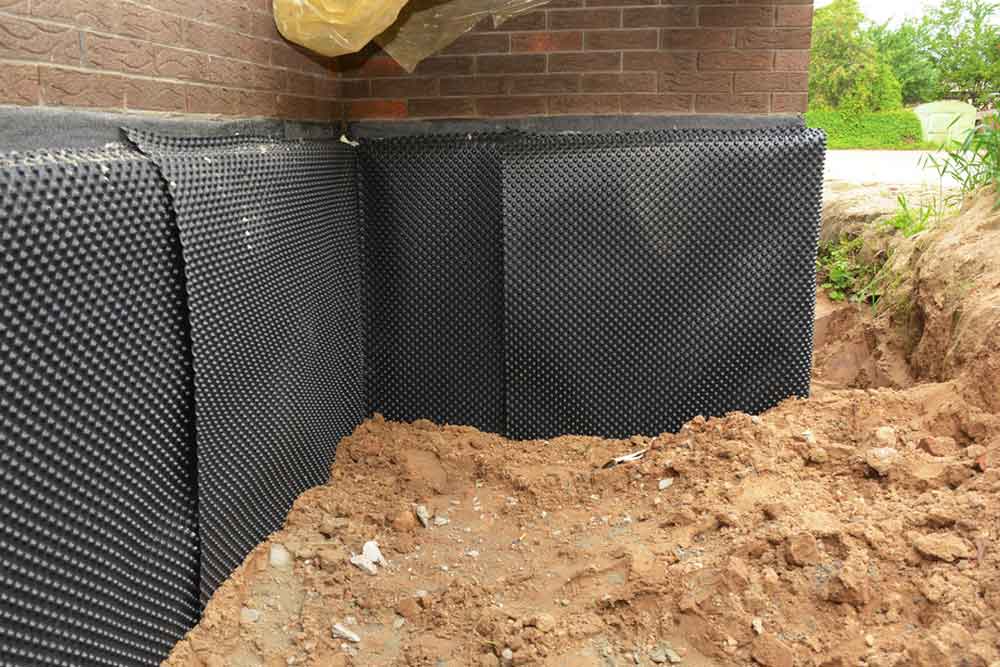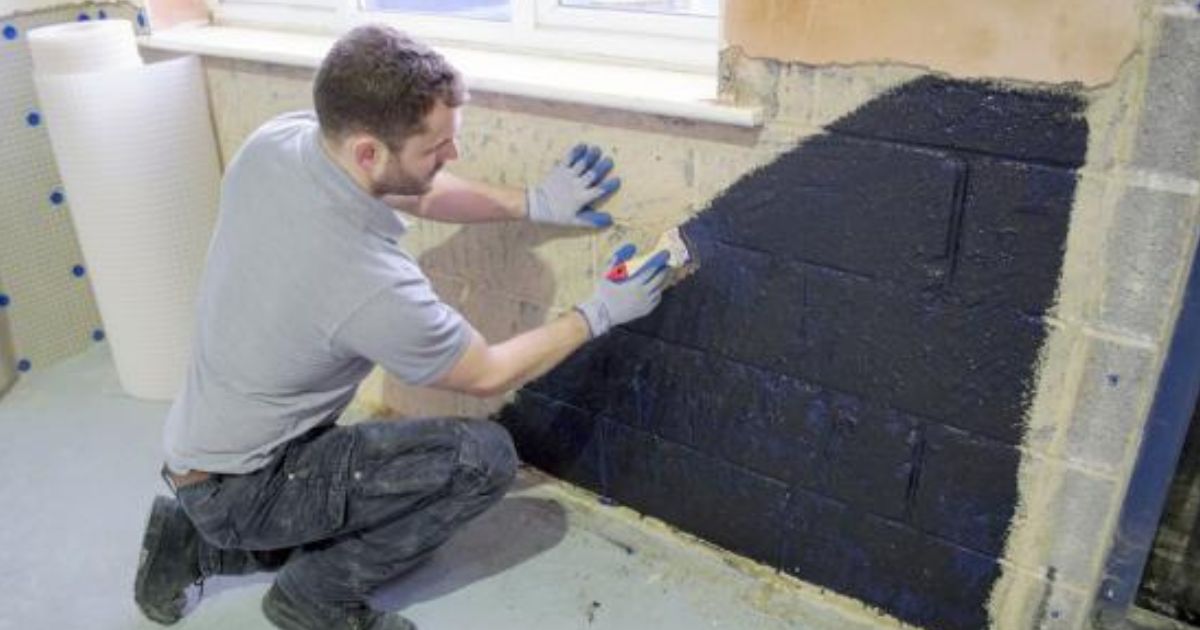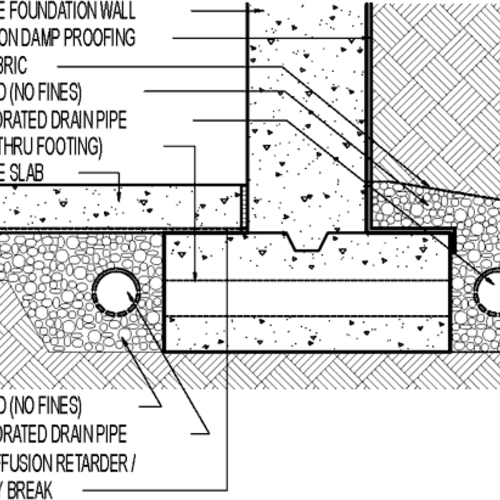Essential strategies for mould removal newcastle that work
Essential strategies for mould removal newcastle that work
Blog Article
Exploring the Different Methods and Solutions for Effective Damp Proofing
Dampness in buildings positions considerable obstacles to both architectural integrity and indoor air top quality. Numerous techniques and remedies have arised to battle this pervasive issue. From standard damp-proof membranes to ingenious chemical treatments, each method uses distinct advantages. Comprehending these choices is essential for reliable dampness control. Choosing the best option depends on particular building problems and needs, triggering additional expedition right into the most reliable damp proofing methods offered.
Recognizing the Root Causes Of Wetness
Dampness can emerge from different resources, comprehending these causes is crucial for reliable removal. Commonly, dampness stems from 3 primary resources: climbing damp, passing through damp, and condensation. Rising moist occurs when groundwater travels upwards with porous products, such as brick or rock, frequently due to an absence of an effective barrier (mould removal newcastle). Passing through moist is typically triggered by exterior factors, including roof covering leakages, damaged rain gutters, or damaged walls, enabling water to penetrate a residential or commercial property. Condensation, on the other hand, arises from excess dampness in the air, often exacerbated by inadequate ventilation and temperature level differences, resulting in water beads forming on surfaces. Identifying these underlying concerns is important, as each kind of dampness needs a customized technique for removal. Correct analysis assists in figuring out one of the most effective services, ultimately protecting the architectural stability of a building and improving indoor air quality
Typical Damp-Proof Membranes

Chemical Damp-Proofing Solutions
Chemical damp-proofing services supply an ingenious strategy to stop dampness invasion in buildings. These methods generally involve the application of fluid chemicals that pass through masonry and form a barrier versus increasing damp. Commonly used chemicals include silanes, siloxanes, and other water-repellent agents that react with surface materials to develop a hydrophobic layer.The application procedure normally requires exploration openings right into the walls, injecting the chemical service, and enabling it to heal. This method is particularly beneficial for older frameworks where typical damp-proof membrane layers might be not practical. Chemical damp-proofing can be much less disruptive and much more economical than comprehensive remodelling projects.While efficient, these remedies depend on proper application and ecological conditions for peak efficiency. damp specialist newcastle. Regular upkeep and surveillance are important to ensure the longevity of the damp-proofing treatment. In general, chemical damp-proofing stands for a functional option for safeguarding structures against moisture-related damage
Tooth Cavity Wall Building Methods
Dental caries wall building and construction techniques use various benefits, specifically in wetness control and power performance. By integrating an air void in between 2 layers of masonry, these wall surfaces effectively mitigate water ingress while improving insulation. This mix not just secures structures from wetness but also contributes to decreased power consumption.
Advantages of Cavity Wall Surfaces
When thinking about effective moist proofing techniques, the benefits of tooth cavity walls stand out prominently. Cavity wall surfaces contain 2 different layers, creating an air void that effectively minimizes dampness infiltration. This design lessens the threat of wetness, as the external wall functions as an obstacle against rain and water access. In addition, tooth cavity wall surfaces improve thermal insulation, which adds to power effectiveness by reducing heat loss. They likewise offer audio insulation, assisting to develop a quieter indoor environment. The air void permits for air flow, which assists in moisture control and reduces the probability of mold growth. These benefits not only improve the total comfort of a structure but also contribute to its long life and structural honesty.
Wetness Control Approaches
Effective wetness control techniques are crucial in dental caries wall building and construction to assure lasting defense versus dampness. One primary method involves the unification of weep holes, which help with water drainage from the cavity, protecting against accumulation. Additionally, making use of breathable membrane layers can assist take care of moisture degrees while enabling trapped vapor to leave. Proper placement of insulation is also critical, as it should not block drain paths. Making certain that the outer leaves of the dental caries wall surface are constructed with waterproof materials improves total durability. Routine upkeep checks are vital to recognize any kind of clogs or damage early, guarding the structure's integrity. Eventually, a combination of these techniques creates a robust protection versus wetness intrusion in cavity wall surfaces.
Insulation and Energy Performance
Insulation plays an essential duty in enhancing power efficiency within tooth cavity wall surface building and construction. By incorporating shielding materials, these walls develop a thermal obstacle that reduces heat loss and reduces energy consumption. Effective insulation not only aids keep website a secure interior temperature level but additionally reduces the threat of dampness, as it prevents condensation within the wall surface tooth cavity. Various methods, such as using inflexible foam boards or mineral wool, can be utilized to attain excellent insulation efficiency. Additionally, appropriate installation is important to ensure that gaps and spaces are decreased, which can or else compromise power efficiency. Ultimately, a well-insulated cavity wall surface adds greatly to general sustainability and reduces home heating and cooling costs for homeowners.
Exterior Damp Proofing Methods
Exterior moist proofing techniques are important for shielding structures from wetness seepage. 2 effective techniques consist of the application of water-proof membrane layers and the setup of French drains. These remedies aid alleviate water accumulation and maintain the honesty of buildings.
Waterproof Membrane Layer Application
While numerous techniques exist for avoiding dampness ingress, the application of water resistant membrane layers stays a very efficient outside moist proofing technique. These membrane layers are normally made from materials such as polyethylene, rubber, or changed bitumen, supplying a durable barrier against water infiltration. The installment process entails using the membrane to the exterior surface areas of wall surfaces or foundations, making certain full protection to avoid leakages. Correct bond and sealing at joints are important to optimizing effectiveness. Water resistant membrane layers can be used in numerous kinds, including fluid finishings and sheet membranes, enabling versatility based upon the certain requirements of the structure. This method not just shields structures from dampness but additionally boosts their long life and structural honesty.
French Drainpipe Setup
One efficient method for handling groundwater and protecting against wetness build-up around a structure's foundation is the setup of a French drain. This drain system contains a trench full of gravel and a perforated pipe that reroutes surface area water far from the foundation. Appropriate setup calls for cautious preparation, making sure that the drain slopes away from the framework to assist in excellent water circulation. Furthermore, the place of the drain is crucial; it should be positioned in areas prone to merging or excess moisture. Routine upkeep, consisting of clearing debris from the crushed rock and ensuring the pipe continues to be unhampered, is important for long-lasting efficiency. Ultimately, a well-installed French drainpipe can greatly lower the danger of water-related concerns in basements and foundations.
Inside Waterproofing Methods
Interior waterproofing methods are essential for safeguarding a building's inside from moisture infiltration and possible water damages. These strategies normally involve the application of customized products and strategies developed to develop a wetness barrier within the framework. One usual technique is using water resistant finishings or sealers on walls and floorings, which stop dampness from permeating surfaces.Additionally, installing indoor drain systems, such as sump pumps, can successfully handle water buildup in basements and creep rooms. One more approach includes using vapor obstacles, which are mounted to prevent dampness movement from the ground right into living spaces.Moreover, resolving any fractures or voids in wall surfaces or foundations with ideal sealants guarantees an extensive protection against water intrusion. By applying these indoor waterproofing approaches, homeowner can substantially minimize the danger of mold and mildew development, architectural damage, and various other moisture-related problems. Correct implementation of these strategies is vital for long-term protection and structure honesty.
Regular Upkeep and Examination Practices
Normal upkeep and assessment practices are essential for guaranteeing the long-term effectiveness of moist proofing remedies in any building. Routine checks make it possible for building proprietors to determine very early indications of wetness intrusion, such as peeling paint, mold and mildew development, and mildewy smells. These indications can signify underlying concerns that need immediate attention.Inspections ought to be carried out a minimum of annually, concentrating on susceptible locations like basements, crawl spaces, and outside walls. Throughout these assessments, home owners must check out sealants, water drainage systems, and ventilation to validate they function correctly.Additionally, maintaining rain gutters and downspouts is essential, as blocked systems can bring about water build-up near the structure. Carrying out a routine maintenance schedule, together with timely repair work, can significantly prolong the life expectancy of wet proofing steps and shield the architectural honesty of the structure. Positive steps ultimately add to the general health and wellness of the living environment.
Frequently Asked Questions
Just How Lengthy Does Damp Proofing Normally Last?
The duration of damp proofing performance differs, typically lasting in between 20 to half a century. Variables such as application high quality, ecological problems, and maintenance practices substantially influence the longevity of the wet proofing treatment.

Can I Damp Proof My Home Myself?
The individual pondered the feasibility of DIY damp proofing. With correct research study and the ideal products, it is feasible. They also recognized the value of expert advice to guarantee long-lasting efficiency and prevent future issues.
What Are the Signs of Ineffective Damp Proofing?
Indicators of inefficient damp proofing consist of persistent musty smells, visible mold development, peeling off paint, damp spots on walls, and timber degeneration - mould removal newcastle. House owners must resolve these problems quickly to stop additional damages and wellness problems
Does Damp Proofing Affect Indoor Air High Quality?

Just How Much Does Specialist Damp Proofing Cost?
Specialist wet proofing costs vary considerably, usually ranging from $1,000 to $5,000 depending on the property's size, the level of the wet concern, and selected techniques. Each circumstance calls for a customized analysis for precise prices. Frequently, wetness originates from 3 key resources: climbing wet, permeating damp, and condensation. When taking into consideration reliable moist proofing approaches, the advantages of cavity wall surfaces stand out prominently. External wet proofing approaches are necessary for shielding structures from dampness infiltration. While various techniques exist for stopping wetness access, the application of water-proof membranes continues to be a highly effective outside moist proofing technique. Indications of inefficient moist proofing consist of relentless stuffy odors, visible mold development, peeling off paint, wet spots on wall surfaces, and timber degeneration.
Report this page